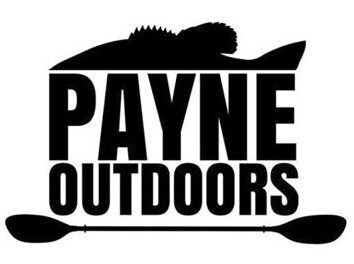Kayak Transport
I left the East Coast Canoe and Kayak festival and ran into a guy in the parking lot with a kayak he had just gotten a “steal” on at one of the show specials. He was standing next to his Toyota Celica scratching his head thinking out loud, “How the hell do I get this damn thing home?” There are numerous options available for transporting your kayak. Manufacturers like Yakima, Thule, and Malone offer an extensive selection of products and accessories. Most fishing kayaks can be easily transported on a roof rack specifically designed for your type of vehicle. It is important to consider this option because certain systems could significantly increase the cost associated with getting started. A kayak retailer usually provides one-stop shopping for these accessories as well as professional installation and assistance for fit and function.
For pickup trucks, the Yakima Outdoorsman 300 is an excellent choice for durability and price. I have used this rack system with oversized pool noodles that double as rollers and saddles. It is a very practical, inexpensive and saves time loading and unloading your kayaks.
Though I don’t own one, kayak trailers are gaining popularity with anglers that use prepared ramps and easily accessible launch sites. For the most part, they do not fit into my type of fishing. Manufacturers with models that meet the needs of kayak anglers include Rack and Roll and Trailex. These lightweight trailers can be easily disconnected and hand-walked to the water’s edge, adding another benefit and measure of flexibility if you choose to go this route. I have traveled to tournaments and faraway fishing destinations with friends who have trailers and they are great for carpooling and hauling multiple kayaks. They also offer a measured increase in gas mileage over roof or over-the-cab options.
Transporting your kayak after you reach your destination is also a necessary consideration. Some areas have launch sites that are only a few feet from the water. Oftentimes you must transport your kayak longer distances to reach the water. This is especially true when trying to get to locations that receive little or no pressure. These areas are the ones that offer the best chance at success for that fish of a lifetime.
Kayak carts are the easiest and most practical method. There are several models available by manufacturers like Harmony and Roleez. Versatile models, like PaddleCart, allow you to tow your kayak behind a mountain bike, golf cart or ATV to get to really remote areas that restrict vehicle traffic. Be sure to check the local regulations before using this method, especially in state and national parks.
For distances that are not that great or where only foot traffic is allowed, simply take a rope loop and pass it through the front handle of your kayak. This makes an effective way to drag your kayak over soft ground, grass or water too shallow to paddle by placing one loop over each shoulder similar to a backpack (See Figure XX). I have used this technique to drag my kayak more than a mile to get to areas inaccessible to vehicle traffic. Another option is to use a handle, like that of a water-ski rope, and drag the kayak by putting your hands behind your back. I use a rope that is designed for dragging deer, but you can easily make one of your own with a piece of PVC and rope. Using a longer rope makes the job easier, especially when getting up steep embankments. Carrying your kayak over your shoulder isn’t feasible for long distances or through thick brush and usually requires another trip to get your fishing gear to the water.
This excerpt taken from Kayak Bass Fishing by Chad Hoover
